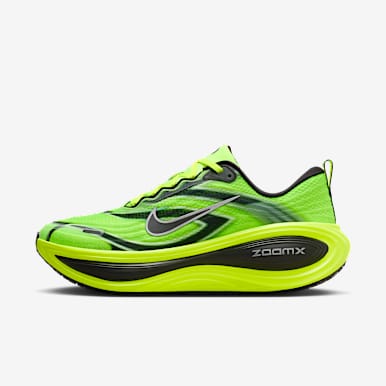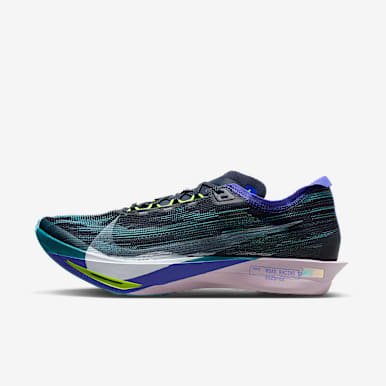How to Help Prevent Shin Splints When Running
Activity
Protect your bones and muscles with these tips.

Shin splints, also known as medial tibial stress syndrome, are a common overuse injury in runners and other athletes who do high-impact activity. Research suggests the injury can affect up to 20 percent of runners. As its name suggests, shin splints appear in and around the tibia (shin bone), which runs along the front of your lower leg. “If you feel pain in your lower leg after running, you may have shin splints,” says Raquelle Felder, PT, DPT and owner of San Diego Mobile Rehab and Physical Therapy.
Depending on the severity of your shin splints, you may feel achiness, tenderness or even sharp pain. Shin splints can also affect two different muscles in your lower leg, Felder says. “Pain located at the front of your shin is caused by inflammation of the tibialis anterior muscle, known as anterior shin splints,” she says. “While pain located along the inner edge of your shin involves the soleus muscle, which is a deep calf muscle, known as medial shin splints.”
Fortunately, there are many ways you can help prevent shin splints. Understanding what causes them can help you adjust your training plan and protect your body from injury.
What Causes Shin Splints?
Running can cause shin splints due to repeated impact on the tibia. Each time your foot hits the ground as you run, your lower body absorbs the impact.
“The onset of pain is due to inflammation of the muscles, tendons and bone in your shins,” Felder says. “Some causes of this include overtraining, repetitive stress, rapid increase in intensity or volume of training, running mechanics, improper footwear, tight muscles, weak muscles or bones, or muscle fatigue,” Felder says. Muscle imbalances or weaknesses in your core and hip muscles can also increase your risk of shin splints, she adds, because it causes your legs to overcompensate.
Your foot strike also plays a role: Overpronation and heel striking are linked to shin splints. Heel strikers have their toes lifted (dorsiflexion) as their foot comes into contact with the ground, causing the soft tissue surrounding the tibia to become strained. Similarly, overpronation — or an excessive inward roll of your foot and flattening of the arch upon impact — also puts stress on the medial structures of the leg. This stress can ultimately result in microtears and inflammation in the surrounding soft tissues. Both of these types of foot strikes can increase your risk of shin splints.
The best way to help prevent severe shin splints is to listen to your body. “Pain is the body’s way of communicating with us,” Felder says. “It grabs our attention and makes us change something.” If left untreated, shin splints can turn into a tibial stress fracture — and more pain. Avoid that outcome with Felder’s tips.
How To Help Prevent Shin Splints
1. Increase Mileage Slowly
Whether you’re an experienced runner who has taken some time away from the sport or a newbie training for your first 5K race, the advice is the same: If you increase your mileage too quickly, you increase your risk of overuse injuries like shin splints.
“Every time your foot hits the ground, this impact generates ground reaction forces. These forces are multiplied two to three times your body weight while running. The bones, muscles and tendons absorb this force, which can make you susceptible to injury,” Felder says.
That’s why it’s important to increase mileage gradually to avoid overuse injuries. The 10 percent rule involves increasing your weekly mileage in increments of 10 or 15 percent. So if you ran a total of 20 miles your first week, you can aim for 22 to 23 miles the next.
2. Always Warm Up
Warming up before any workout is essential for preparing your body for movement. Dynamic movements, in particular, can help increase oxygen-rich blood flow to your muscles, making them warm, which can reduce your risk of injury. “Light jumping such as butt kicks or jumping jacks can increase your heart rate and start to increase the load on your bones to prepare for running,” Felder says.
Many people have tight glute muscles caused by sitting down at a desk all day. Warming up the glutes, hamstrings, quads and calf muscles before a run can help prepare these muscles for high-impact activity.
“Prioritize dynamic warm-ups over static ones to properly prepare the muscles and optimize your performance for training,” Felder says. Dynamic warm-ups are active movements that enable you to stretch your muscles to their full range of motion. These include walking lunges, knee hugs and leg swings, for example. “Foam rolling is also a great way to increase blood flow to your glutes, hamstrings and calf muscles and to alleviate muscle tightness,” Felder says.
Apart from those major muscle groups, you’ll also want to target your tibialis anterior, a muscle that goes directly over your shin bone and attaches to your foot. “Warm up and strengthen the tibialis anterior to prevent anterior shin splints with toe raises or resistance band exercises that put your foot in dorsiflexion,” Felder says. Dorsiflexion means your foot is being pulled back toward your shin bone.
Try out these dynamic warm-ups before your next run:
- Start by standing on a step in an upright position with your feet hip-width apart.
The balls of your feet should be near the edge of the step. R aise your heels up until you are on your toes. - Slowly lower.
- Repeat 10 to 15 times.
Pro tip: “Calf raises are a great warm-up, but also add eccentric calf raises for the muscle to work under tension in a lengthened position, which helps reduce risk of injury,” Felder says. An eccentric calf raise can be performed off a yoga block or another elevated surface. Standing in front of a wall, press up onto both toes and then prop your one foot up behind you. Slowly lower the other foot so that it’s level with the yoga block or platform you’re standing on. Do 10 to 15 reps on each foot.
Body Weight Squats
- Start by standing with your feet hip-width apart.
- Squat down, drawing your glutes backward as if you’re going to sit on a chair.
- Keep your spine neutral and your chest facing forward and upright.
- Go back to standing.
- Repeat 15 to 20 times.
3. Incorporate Recovery Strategies
If you’re training for a race, how you program your training is essential for success and longevity in the sport. For example, doing long runs five days a week won’t allow your body to recover. This can lead to inflammation and symptoms of overtraining syndrome, such as fatigue and shin splints.
Incorporate recovery strategies to help prevent overuse injuries and keep doing what you love. If your shins hurt, take a rest day to avoid more serious conditions such as iliotibial band syndrome, patellar tendonitis or stress fractures.
Here are some recovery tips:
- Wear compression socks during and after your run to encourage blood flow to aid recovery.
- Eat an anti-inflammatory diet to regulate inflammation and accelerate the recovery time.
- Take an Epsom salt bath.
- Foam roll.
- Roll a firm ball under the bottom of your foot.
- Stay hydrated.
- Sleep seven to nine hours.
Recovery can also include movement. Cross-training on days you aren’t running can help strengthen key muscles and prevent imbalances or weakness.
4. Incorporate Cross-Training
On at least one of your off days from running, consider moving your body in a new way to recruit different muscle groups and ease pressure off your joints. “Since running is a high-impact activity, choose low-impact activities that train your cardiovascular system, while allowing your body to recover and strengthen other muscles that aren’t primarily used for running,” Felder says. Some low-impact exercises you can do on your cross-training days include:
- Swimming
- Cycling
- Elliptical
- Pilates
- Yoga
5. Wear the Correct Shoes
Wearing the right running shoes is vital to help prevent shin splints. “It’s just as important to wear the correct footwear as it is to identify when you need new footwear,” Felder says. “Replacing your running shoes depends on the type of shoe you run in, running surface, your body weight and running mechanics, but it’s generally recommended to purchase new running shoes after 250 to 500 miles.”
The right shoes are particularly essential for people who:
- Overpronate
- Are overcoming an injury
- Heel-strike
- Have a high running mileage
- Run frequently
Look for running shoes with cushioning and arch support to help with shock absorption.
6. Focus on Form
Knee pain, s
- Heel striking
- Excessive foot dorsiflexion
- Overstriding
- Toe push off
Other Considerations
Felder adds that when your hip muscles aren’t strong, your legs are forced to take on most of the load, making them prone to injury. In addition, running with an improper arm swing, or crossing your arms in front of your chest or torso, causes rotational movement that negatively affects your running alignment, she explains.
With the right form, the right training program and the right running shoe, you can reduce your chances of shin splints and improve your running performance.
7. Check Your Bone Density
Felder says it’s imperative to eat enough food as you train, as nutrition is the key to keeping your bones and muscles strong and healthy. “Insufficient bone density could put you at risk of shin splints, especially in women runners and long-distance runners,” she says. “I would recommend checking your bone health with a physician if you have concerns.”
8. Run on Soft Surfaces
Hitting the pavement daily can put a lot of stress on your bones, joints and muscles. Felder recommends switching up the surfaces you run on to protect your body. “Different running surfaces have different impacts on the ground reaction forces that our body absorbs,” Felder says. “Pavement and concrete have the highest GRFs, while grass and trails have the lowest GRFs. Rubber tracks are also a good option and provide moderate impact.”
The information contained in this article is for informational purposes only and does not contain or constitute medical advice or medical opinion. Please consult a qualified and licensed medical professional regarding medical conditions and prior to beginning or modifying any exercise program.
Words by Cheyenne Buckingham

































